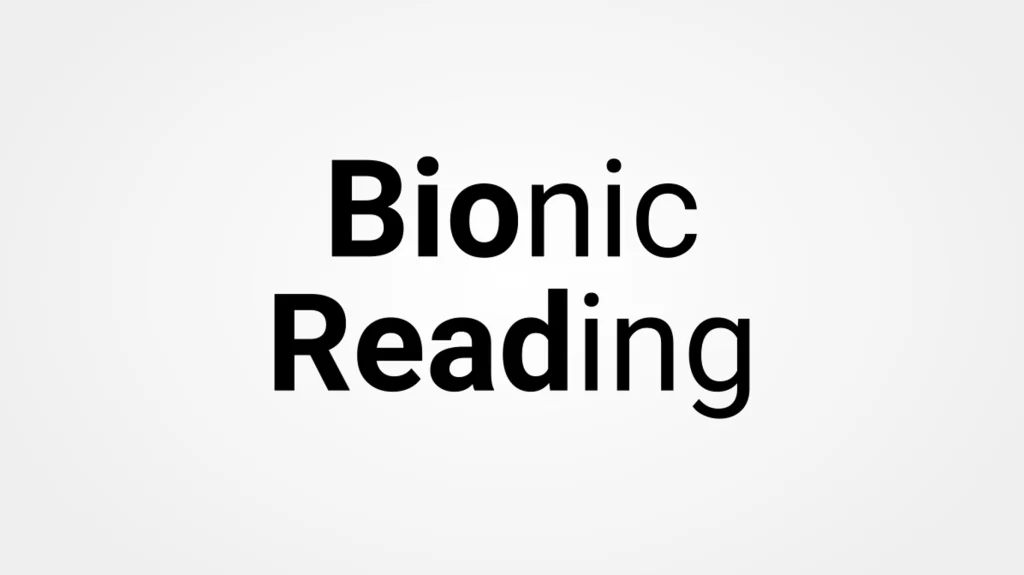What is Bionic Reading?
Bionic Reading is a new method facilitating the reading process by guiding the eyes through text with artificial fixation points. As a result, the reader is only focusing on the highlighted initial letters and lets the brain center complete the word. In a digital world dominated by shallow forms of reading, Bionic Reading aims to encourage a more in-depth reading and understanding of written content.1
This blog will discuss the accessibilities of Bionic Reading from the following three features.
Feature 1: Highlighting initial letters to facilitate reading
This feature helps people reading faster and easier, and especially benefits the ADHD users. It fits within the functional solutions model – focusing on applying innovations to overcome the limitations of disability. This app enpowers people with certain disabilities to read and helps them build confidences on finishing the reading tasks, increasing their desirabilities. Here is a quote from a user with ADHD:
“Having ADHD and processing issues means that I read very slow because my brain can’t focus on the words enough to both read them and process what they mean at a decent pace. Using Bionic Reading® has allowed me to feel functional and productive when I’m reading something lengthy – it’s such a GAME CHANGER! I can’t wait for more products and platforms to integrate with Bionic Reading®, so everything becomes more accessible.” 1
This feature also makes reading more accessible to a wider range of users. For example, people who are deaf or just don’t like to use audio books and have troubles on reading would appreciate that they have an alternative solution available. Besides, the general group of readers also benefits a lot from this innovative reading experience.
From the Economic model, it defines disability by a person’s inability to participate in work. While with the Bionic Reading, for example, ADHD users have a better ability to read and process work. Therefore, they are unlocked from some working limitations and have more choices to participate in the economic society.
Feature 2: Flexible compatibility
As a mobile app, it is available on both iOS and Andriod; As a desktop app, it is available for both Mac and Windows system; As a web form, it has an independent website platform and also built a Chrome extension. Regardless those formats, Bionic Reading also integrates with Kindle to facilitate readings. From the functional solutions model, this flexibility on different devices enhances the capability of using this tool, which said, more accessible.
Feature 3: It’s FREE
This app said that it won’t be free forever, but at least till now it’s still free to use. The good part is that it didn’t add extra burdens on users who really need this. From this affordability aspect, Bionic Reading is accessible to everyone. While thinking of the Economic model of disability, if in the future Bionic Reading charged fees for its service, it would be nice if the app considers to offer discounts or a free version for users with disabilities.
Some limitations
– Insufficient contrast
From the customer reviews, it’s mentioned that the contrast of dark mode is not strong enough, which might reduce the usability of the app.
“Only request is for a high-contrast dark mode (light mode is black on white, but dark mode is white on medium-gray…not my preferred reading condition).” — cindy mayweather, App Store 2
– Limit to certain languages
The technique of “highlighting initial letters” to improve reading efficiency seems not apply to languages outside Latin or European languages, such as Chinese, etc. This nature limits an even wider group of people to use it.
1 https://bionic-reading.com/
2 https://apps.apple.com/app/id1644658030?see-all=reviews
